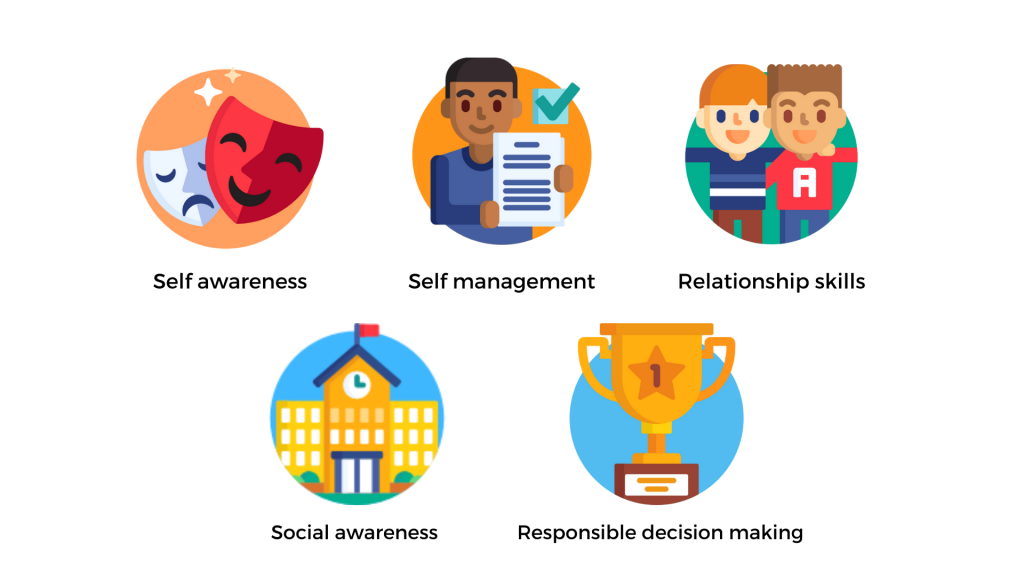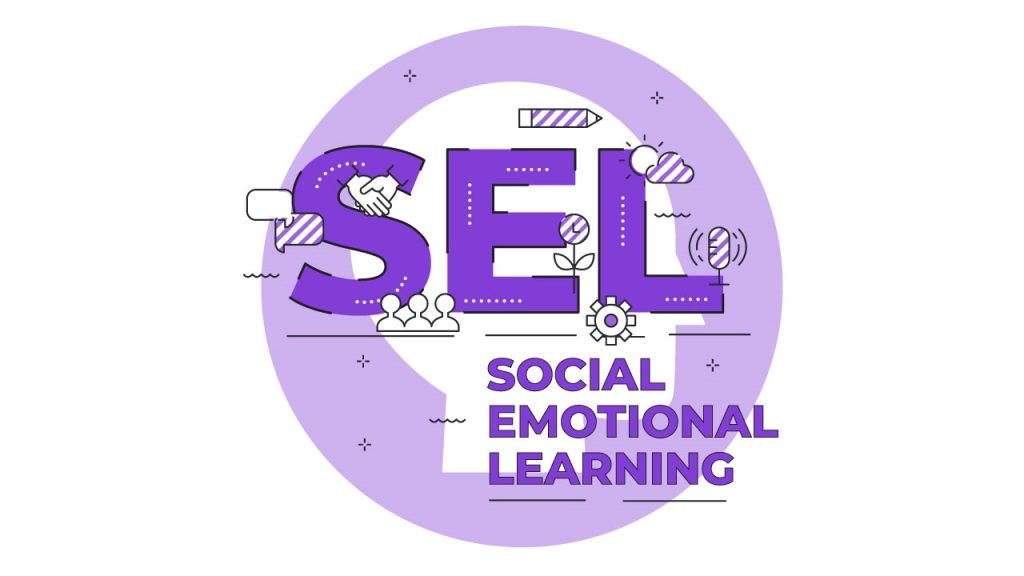Social Emotional Learning (SEL) is an educational framework that focuses on developing students’ emotional intelligence, interpersonal skills, and self-awareness alongside traditional academic learning. As schools increasingly recognize the importance of holistic education, SEL has gained prominence as a crucial component of the curriculum.
By integrating emotional well-being into education, SEL helps students manage their emotions, build healthy relationships, make responsible decisions, and develop empathy. This approach not only enhances academic success but also prepares students for life beyond the classroom by equipping them with essential social and emotional skills.
In this article, we will explore the fundamentals of SEL, its core components, the benefits of integrating it into the curriculum, effective strategies for implementation, and the challenges faced in adopting SEL in schools.
The Core Components of Social Emotional Learning (SEL)

The Collaborative for Academic, Social, and Emotional Learning (CASEL) outlines five key components of SEL that contribute to students’ emotional and social development:
1. Self-Awareness
Self-awareness involves recognizing and understanding one’s emotions, strengths, weaknesses, and values. This skill helps students develop confidence, improve their emotional intelligence, and cultivate a growth mindset.
Examples of Self-Awareness Activities:
- Journaling about emotions and personal experiences
- Practicing mindfulness and self-reflection
- Recognizing strengths and areas for improvement
2. Self-Management
Self-management refers to the ability to regulate emotions, set goals, and handle stress effectively. This skill is essential for students to stay motivated, focused, and resilient in the face of challenges.
Examples of Self-Management Strategies:
- Deep breathing and relaxation exercises
- Setting and tracking personal goals
- Developing coping strategies for stress
3. Social Awareness
Social awareness involves understanding and empathizing with others, appreciating diversity, and recognizing different perspectives. It helps students develop compassion and a sense of social responsibility.
Examples of Social Awareness Activities:
- Engaging in cultural awareness discussions
- Practicing active listening and perspective-taking
- Volunteering and community service projects
4. Relationship Skills
Strong relationship skills enable students to build and maintain healthy interpersonal relationships. This includes effective communication, teamwork, conflict resolution, and cooperation.
Examples of Relationship-Building Activities:
- Role-playing conflict resolution scenarios
- Collaborative group projects and peer mentoring
- Practicing effective communication in class discussions
5. Responsible Decision-Making
Responsible decision-making involves evaluating situations, considering consequences, and making ethical and constructive choices. This skill is crucial for both academic success and personal growth.
Examples of Decision-Making Exercises:
- Analyzing real-life ethical dilemmas
- Engaging in problem-solving activities
- Encouraging reflective thinking before making choices
The Benefits of Integrating SEL into the Curriculum
Implementing SEL in schools offers numerous advantages for students, educators, and the overall learning environment.
1. Improved Academic Performance
Research shows that students who participate in SEL programs demonstrate better academic performance, improved focus, and increased engagement. When students manage their emotions effectively, they are more likely to excel in their studies.
2. Enhanced Emotional Intelligence and Mental Health
SEL helps students develop emotional intelligence, reducing stress, anxiety, and depression. By fostering self-awareness and self-regulation, SEL creates a positive mental health foundation for students.
3. Development of Positive Relationships
Through SEL, students learn to navigate relationships with empathy, respect, and cooperation. These skills enhance teamwork, reduce bullying, and foster a more inclusive and supportive school environment.
4. Better Conflict Resolution and Reduced Behavioral Issues
SEL teaches students constructive ways to handle conflicts and disagreements. Schools that implement SEL report fewer disciplinary issues, improved student behavior, and a more harmonious classroom atmosphere.
5. Preparation for Life Beyond School
SEL equips students with essential life skills that are valuable beyond the classroom. These include leadership, resilience, emotional regulation, and decision-making—critical for success in the workplace and personal relationships.
Effective Strategies for Implementing SEL in Schools
Successfully integrating SEL into the curriculum requires a structured approach that involves educators, parents, and students. Here are some effective strategies:
1. Incorporating SEL into Lesson Plans
Teachers can seamlessly embed SEL into various subjects by integrating discussions about emotions, ethical dilemmas, and interpersonal relationships into everyday lessons.
2. Creating a Safe and Supportive Classroom Environment
A positive classroom climate fosters open communication and emotional safety. Teachers can achieve this by promoting respect, encouraging collaboration, and establishing trust among students.
3. Implementing Mindfulness and Stress-Relief Activities
Mindfulness practices, such as breathing exercises and guided meditation, help students manage stress and improve focus. These activities can be incorporated into the school day to enhance emotional regulation.
4. Encouraging Student-Led Discussions and Reflection
Giving students a voice in discussions about emotions, relationships, and personal growth encourages self-reflection and peer support. Journaling, storytelling, and classroom discussions can be powerful tools.
5. Engaging Parents and the Community
Involving parents in SEL initiatives ensures that social-emotional learning extends beyond the classroom. Schools can provide workshops, resources, and opportunities for parents to support their children’s emotional development at home.
6. Training Educators in SEL Practices
Providing teachers with professional development on SEL strategies enhances their ability to integrate emotional well-being into their teaching practices effectively.
Challenges in Implementing SEL and How to Overcome Them
While SEL offers significant benefits, schools often face challenges in implementation. Below are some common obstacles and ways to address them:
1. Lack of Time in the Curriculum
Educators may feel that there isn’t enough time to include SEL activities. The solution is to integrate SEL seamlessly into existing subjects rather than treating it as a separate component.
2. Resistance to Change
Some educators, parents, or administrators may be skeptical about the value of SEL. Schools can address this by providing research-based evidence of SEL’s impact and offering training sessions.
3. Need for Teacher Training and Resources
Not all educators are equipped with the knowledge to teach SEL effectively. Schools should provide professional development opportunities and SEL-focused lesson plans.
4. Measuring SEL Outcomes
Unlike academic subjects, assessing SEL progress can be challenging. Schools can use qualitative methods, such as student self-reflections, teacher observations, and feedback from parents, to evaluate success.
Conclusion: The Future of SEL in Education
As society increasingly recognizes the importance of emotional intelligence, SEL is becoming an integral part of modern education. By fostering self-awareness, emotional regulation, empathy, and responsible decision-making, SEL prepares students not just for academic success, but for a fulfilling life.
Integrating social emotional learning into the curriculum is not just an option—it is a necessity for creating a generation of emotionally intelligent, compassionate, and resilient individuals. Schools, educators, and parents must work together to ensure that SEL becomes a core component of every child’s education, paving the way for a healthier, more empathetic future.

